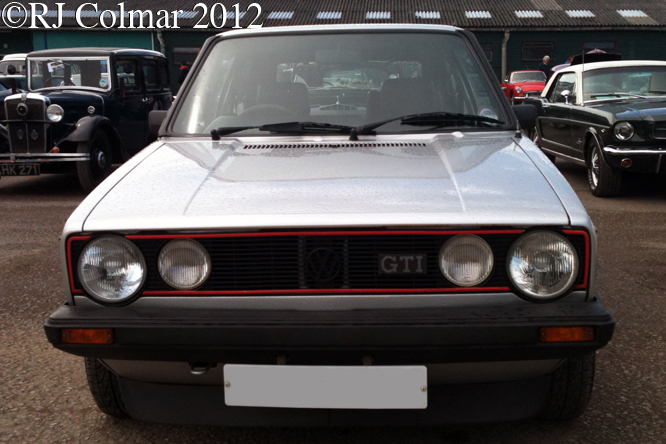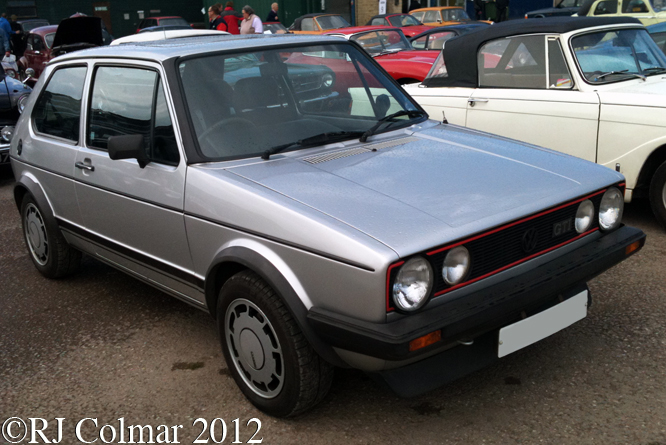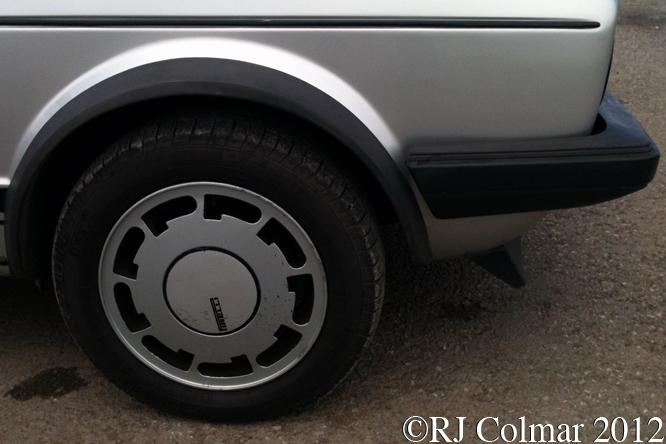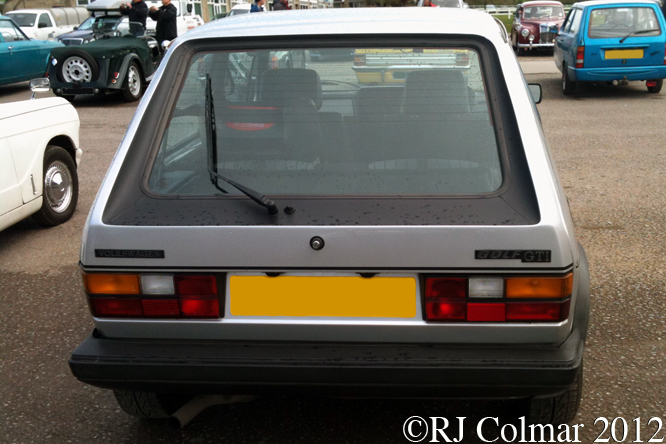As it became apparent that the Allies were going to win the Second World War ideas were sort about what to do with Germany after hostilities ceased. In 1944 United States Secretary of the Treasury Henry Morgenthau, Jr came up with the Morgenthau Plan which sort to split Germany into three sectors with a vision of a deindustrialised, pastoral agrarian nation. It soon became apparent however that such a plan would only be able to support 2/3rds of the German population meaning around 25 million Germans would have to be re-located.
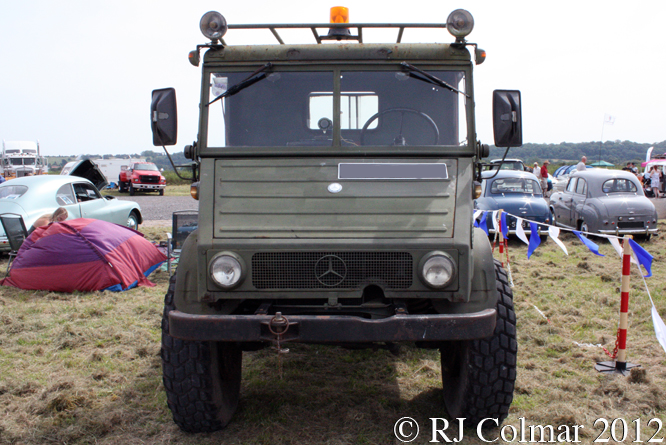
The plan for Germany that was eventually agreed by the allies was suitably adjusted to avoid such a migration, but with de militarisation high on the agenda in the immediate aftermath of the cease fire large organisations like Daimler Benz were prohibited from building all wheel drive vehicles.
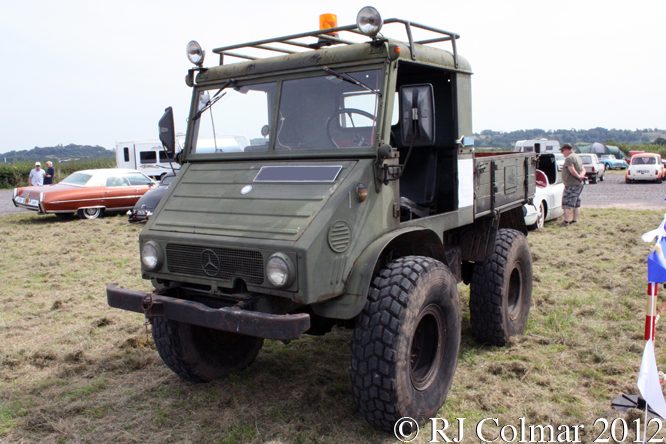
As these events unfolded Albert Friedrich former head of aircraft design at Daimler Benz found his services to be little in demand and so he set about designing an all purpose vehicle that would meet a multitude on demands in the foreseen agrarian economy called the Universalmotorgerät abbreviated to Unimog which translates as Universal Motor Machine.
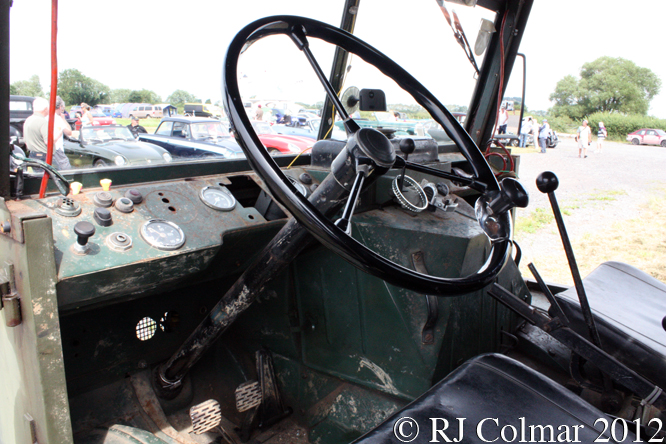
The essential characteristics of the Unimog were that it had all wheel drive for all terrain work, front and rear axles to be equipped with suspension, brakes, unlike conventional tractors, and differential locks for conventional road use, two cab with heating and two padded seats, one ton load capacity, front and rear power take offs with equipment mounting facilities front, back top and sides.
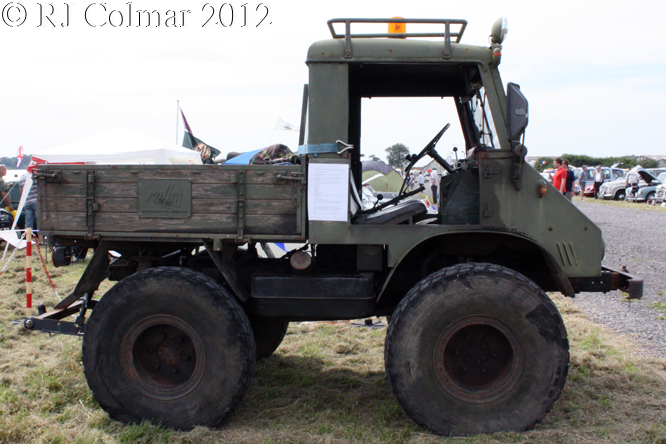
To give the vehicles additional ground clearance the axles were fitted with four wheels of equal size and portal gears so that the axle centers were above the wheel centers. The original track width was devised so that the vehicle could stand astride two rows of potatoes in a field. Many of these features can still be found on Unimogs leaving the factory today.
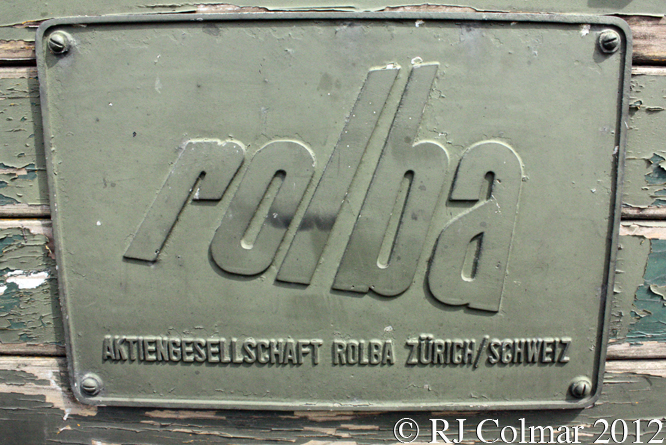
The first prototype was built by Erhard & Söhne in 1946 and patents were soon granted so that the vehicle was classed as agricultural vehicle to reduce the tax burden on owners. A huge success from it’s launch 600 Unimogs were built by Erhard & Söhne until all wheel drive restrictions were lifted from Daimler Benz in 1950 when they took over production because Erhard & Söhne could no longer build enough vehicles to meet the demand.
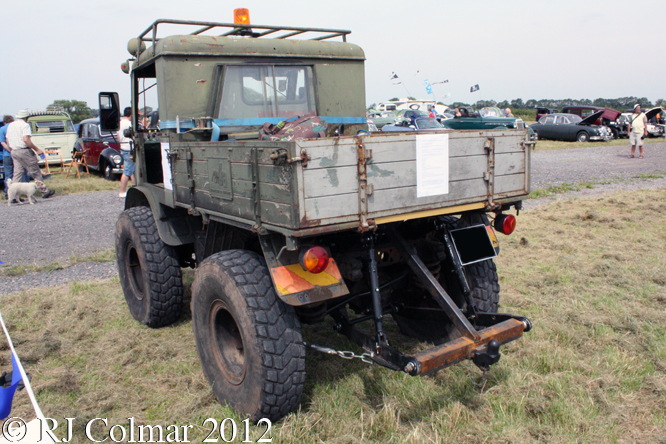
Daimler Benz built a new facility which went operational in 1951 producing around 300 vehicles a month. It was not long before variants appeared including military derivatives which were bought by the French Army. In 1966 the 100,000 Unimog was built and the 200,000 in 1977, and as mentioned production continues to this day> Despite not being known as performance models in 2012 Arnie Schwarzenegger swapped his Hummer for one customised by Mertec reputed to have cost US$ 250,000.
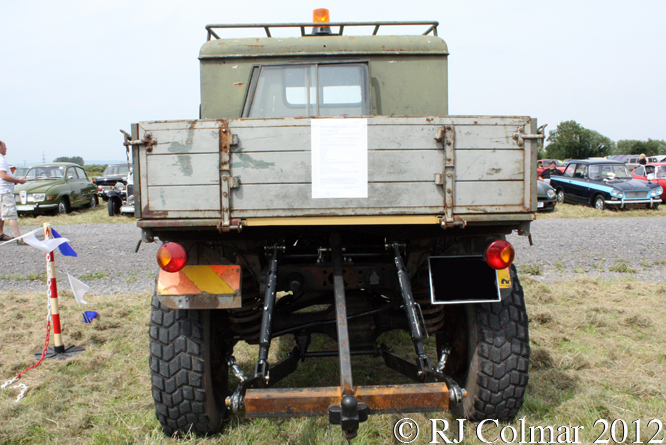
Today’s featured vehicle seen at Easter Compton Summer Classics show a couple of years ago is a 1965 406, a line that was in production from 1963 to 1988. Originally powered by a 65 hp diesel motor driving through a 6 speed gearbox, this one appears at some point to have been kitted out with snowplough equipment from the Swiss Rolba AG which was acquired by ZAUGG AG EGGIWIL in 2010.


